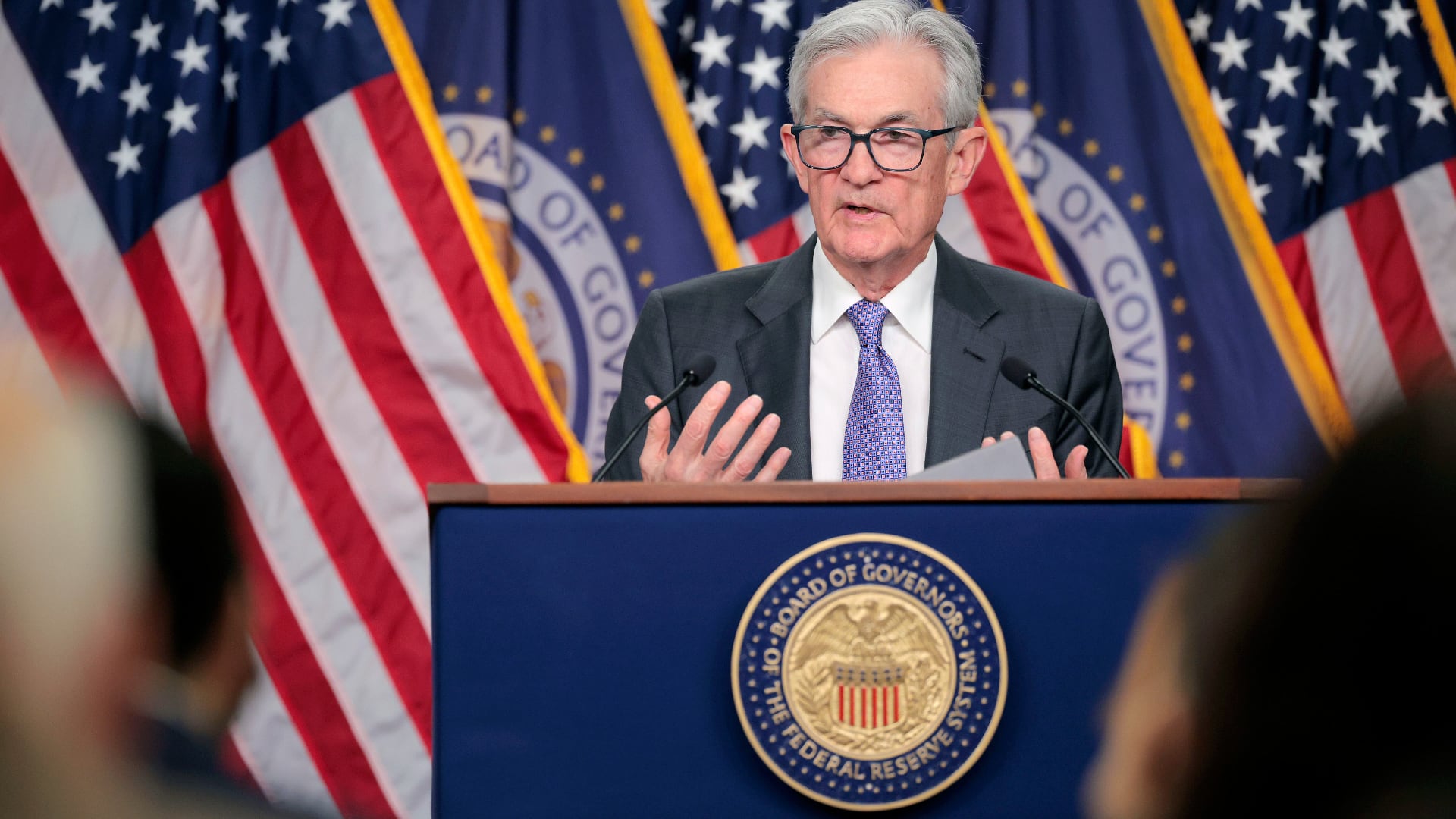When Colleen Caulfield decided to go to graduate school, she did not know how her family would get by without her income. The Wilmington, Delaware mother of two worried about the financial realities of a returning student: would they have enough money to pay for housing and child care and still put food on the table?
Then, in July of 2021, she started receiving monthly installments of the expanded child tax credit. Because she and her husband have two children under 6, that extra $600 per month made a huge difference in their budget.
"I'm not a super religious person, but I just was like, thanking God," Caulfield remembered. "How on earth did this work out to where this is helping us be able to make ends meet and just not have to worry as much?"
Much of Caulfield's child tax credit dollars went to a critical cost for families: child care. With two children in early childhood education, those costs can pile up. According to a recent report from the Treasury Department, child care expenses range, on average, from $8,000 to $10,000 per child under the age of 5. Families would have to allocate about 13 percent of their family income to pay for child care for just one child, the report explained.
Caulfield paid between $1,200 and $1,500 per month per child, based on the age of her child at the time.
"It's insane," Caulfield exclaimed. "It's like one and a half of our mortgages."
Which is why the monthly payment of the child tax credit had such an impact.
"It's expensive having kids," she laughed. "It probably went directly to child care costs, but you know, the diapers and the food. I mean, they just really eat a lot!"

January 15, 2022 will be the first time since the program rolled out that Caulfield — and millions of American families — will not see that money in their bank accounts or mailboxes. The program expired at the end of 2021 and Congress has not renewed it. For Caulfield, not having those funds means making sacrifices, just to get through the next few months.
Thoughts run through her head about what they can and cannot buy, like this thought about the grocery list: "We can't really do the blueberries this week. Like that's just too much because they are expensive."
Economists cite data showing that the expanded child tax credit — and making those payments on a monthly basis — had an outsized impact on the American economy. According to the Center on Poverty & Social Policy at Columbia University, for every $1 distributed to families, the economy will see $8 in net benefits to society.
Another analysis by the Niskanen Center, a DC-based think tank, finds that one year of the monthly child tax credit allowance would produce $27 billion in consumer spending, generate nearly $2 billion in state and local taxes, and provide the equivalent financial support for more than 500,000 median-wage, full-time jobs.
"It's literally money that is allowing people to take care of their families to get to work. The thing is every family is different and the power of cash is that it's fungible, right?" Natalie Foster, co-founder of the Economic Security Project said. "It means the freedom for families to make decisions around what's important to them in any given week, any given month."
The monthly child tax credit payments may have expired in December 2021, but it is January 2022 where families will feel the biggest pinch. The beginning of the year marks the first time in six months that parents and guardians won't have that extra cash to work into their bottom line. For those hovering around poverty, advocates are especially concerned.
"At the lower income end, families are quite literally putting food on the table," Foster said. "One of the things we know is that hunger fell a third among Latinx and Hispanic families and a quarter among Black families due to the child tax credit, reminding us that poverty is a policy choice that we are making in America."
The expanded child tax credit did not just go to families with the highest financial need — though it did have an obvious impact among those children. According to Foster, 10 million children in the U.S. could fall back or deeper into poverty without an extension of the program.
Overall, the program provided payments to more than 60 million children through 36 million families. That covered nearly 90 percent of all of the children in the country with monthly payments of $300 for children under 6 and $250 for those from ages 6-17.
That includes parents like Natacha Chavez in Phoenix, Arizona. Chavez was just laid off from her job in the non-profit sector. Her family circumstances have changed since the last child tax credit payment hit their account.
"On a personal level, CTC is definitely important. I feel like no matter what your circumstance is, as a middle class family, it's a good bridge," Chavez said. "So when there are situations like this, when there is a gap, when there is a stop at income, for whatever reason, you know, there was something coming."
Those funds are not coming this month when Chavez and her family need them most. But in July of 2021, when Chavez started receiving the tax credit, it just made everything a little bit easier.
"At the beginning of the school year, we got my kid new glasses," Chavez remembered. "He'd had his for a couple years, so we thought it would be a good time to upgrade him. And when the child tax credit came, it was a perfect time."
She said it took away some of the stress around these simple but extra expenses for a family.
"There was definitely less of a worry there. I almost want to say it wasn't a worry at all, because you knew you could do these things. You knew you could do the things that you need to do," Chavez said.

With two school-aged children, the extra $500 per month for Natacha's family meant there could just be extras: things as simple as chocolate milk from the local dairy. Now, there is not any extra left over and that means her children are hearing "no" a lot more.
"Sometimes your kids are like, 'Hey, why don't we go here for dinner?' she said. "And you're like, no, actually we can't do that."
Chavez said she expects a lot of families will be making cutbacks this January.
The future of the CTC is uncertain. As part of the larger Build Back Better Act, it does not have the votes to proceed. The gridlock has the potential to have an impact on society as a whole. Groups like the Economic Security Project are pushing for Congress to do more — and quickly.
"American families are working and Congress is not. Congress is not listening to voters, and that is the only explanation I can see for the gridlock in DC during this extremely trying time," Foster said. "I can't think of a month where the parents in America would need a check more than January of 2022 in the midst of the rising cost of living and the COVID surge."
Still, the nonpartisan Congressional Budget Office estimates that putting the CTC in place for one more year will cost $185 billion. To make it permanent, the cost will be $1.6 trillion.
For Wilmington mom and graduate student Caulfield, there is a light at the end of the tunnel. She is set to finish graduate school in a few months — meaning there will be a second income in her family again. Still, she is holding out for her tax refund and hoping the rest of the child tax credit she'll get in this return will hold things over until she finds a job.
"This month we consolidated our debts and took out some extra money. So that will cover us for January. And then, we're counting on tax money," Caulfield explained.
Chavez picked up part-time work as a canvasser. In the meantime, she has cut a lot of extra expenses in her family budget to try to make ends meet.
Both mothers have pretty simple messages for Congress.
"We're all drowned out here in this pandemic, like, nobody's winning right now," Caulfield said. "I'm all for a compromise too, like any little bit helps. Something should be there for the parents."
"Come make that budget. Come, come, hang out with the kids and see the things they need on a daily basis," Chavez issued an invitation to members of Congress. "It's just very frustrating that we have these folks that don't seem to actually know what happens to American families."
Despite the long-term costs, Foster of the Economic Security Project still believes that investing in parents like Caulfield and Chavez is an investment worth making.
"I think the beauty of the child tax credit checks is that they said this is going to nearly every parent in America. Parenting is hard. It's hard work, and it's very expensive," Foster said.
"[The child tax credit] was simple, it was efficient, it was fast. And that is what the future of social policy needs to look like," she advocated.



